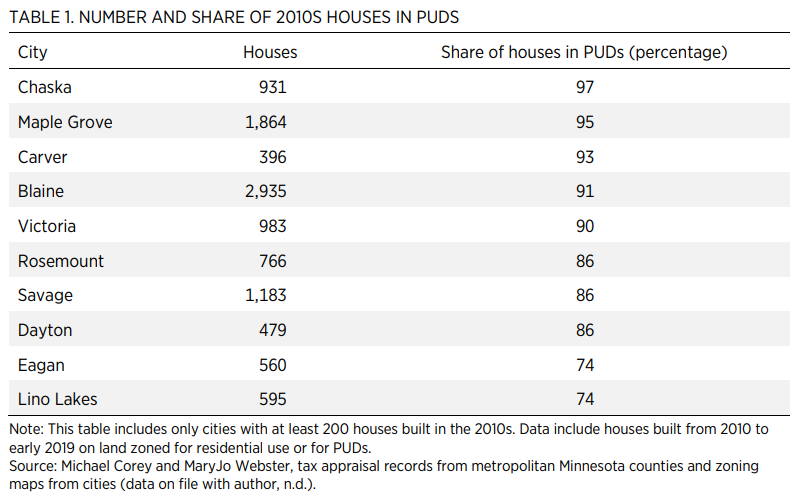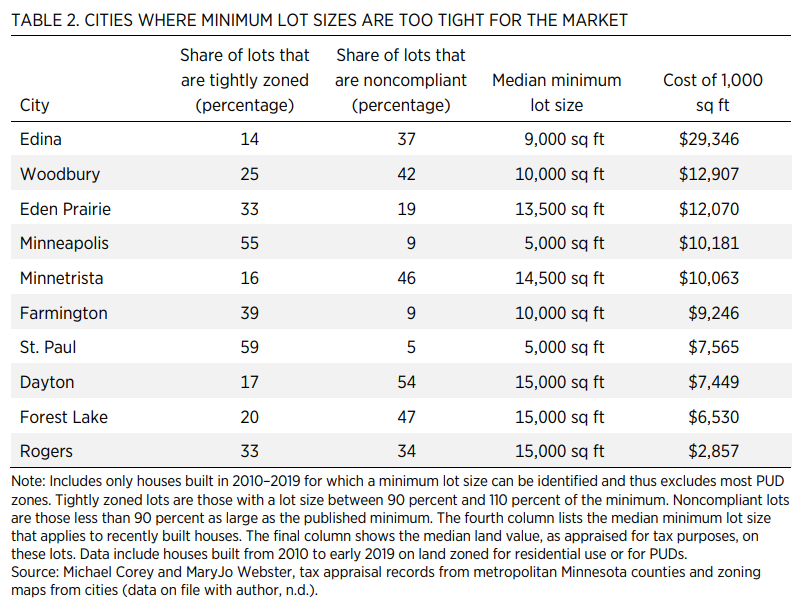- | Housing Housing
- | State Testimonies State Testimonies
- |
Rights, Responsibilities, and Preemption in Minnesota
Minnesota Senate Committee on Local Government Policy
Chair Jasinski, Vice Chair Newman, Ranking Member Cwodzinski and members of the Senate Committee on Local Government Policy, thank you for inviting me to comment on residential zoning. I study land use regulation and housing markets as codirector of the Urbanity Project at the Mercatus Center at George Mason University. The Mercatus Center is dedicated to applying market-oriented academic research and ideas to real-world problems.
Local governments have power over land use, and they bear the final responsibility in using these powers justly. But the exercise of local land use authority relies on institutions designed by the state. Thus, the state legislature has the responsibility of adjusting institutions that are working poorly for citizens, markets, or local governments.
The bill before you, SF 3259, touches several aspects of the state’s role in setting the framework for the exercise of local power over land use. It would limit the use of planned unit developments (PUDs), newly allow the use of certain fiscal tools, preempt some zoning controls, and adjust the planning process.
Land of 10,000 PUDS
Mounting evidence suggests that the institutions of development in suburban Minnesota are broken. An increasing number of suburbs are abandoning traditional zoning in favor of PUDs. PUDs are appropriate for unique or innovative projects, but they are an invitation to opaque policymaking and favoritism. In addition, the creation of a PUD agreement involves up-front administrative costs, making it uneconomical for small-scale builders.
PUDs used for routine subdivisions are a warning that something is not working as it should.
In the Twin Cities area, about half of recently built suburban single-family homes are in PUDs. Table 1 shows the 10 most PUD-dependent cities.

Here, the problem appears to be that local governments cannot, using the fiscal tools the state has allowed them, make new development pay for itself. Instead, localities impose uneconomical zoning to force builders into PUD negotiations.
In addition, Minnesota suburbs, like many local governments nationwide, use zoning to curate which types of people can move to town. This is an inappropriate use of government power and tramples on property rights and fair housing principles.
To address these interrelated problems, HF 3256 proposes to empower local governments fiscally in exchange for limits on their ability to force developers into using PUDs, either as an explicit requirement or by setting minimum lot sizes uneconomically high so that land value can be unlocked only via a PUD.
Minimum Lot Sizes
The most universal form of residential land use regulation in the United States is minimum-lot-size requirements. In metropolitan Minnesota, about 43 percent of houses built in the 2010s were on lots very close to, or significantly smaller than, the minimum lot size. In some cases, local governments routinely grant exceptions to their own minimum-lot-size requirements, resulting in noncompliant lots. In other cases, a large share of lots is very close to the minimum lot size. In either case, the data show that there is strong demand for lots smaller than the legislated minimums.
Table 2 shows the 10 metropolitan cities with the highest share of newly built houses on lots that are either near or smaller than the minimum lot size. The list includes both Minneapolis and St. Paul, as well as eight suburbs. Minimum lot sizes vary within each jurisdiction, but all the suburbs have median minimum lot sizes between 9,000 and 15,000 square feet, or three to five homes per acre.
The additional cost of land can be substantial. Regulations that effectively add 1,000 square feet of land to the lot size increase the cost of a home by about $10,000 in most jurisdictions, although the figure is as high as $29,000 in Edina. In research undertaken in another context, I find that households rarely value extra yard space by as much as it costs.

Thus, smaller minimum lot sizes would likely result in a more diverse housing stock, better value for home buyers, and new homes that are attainable to a greater number of Minnesota households.
Conclusion
Land use authority is not a purely local prerogative. It takes place within an institutional framework defined and regularly adjusted by the state. When warning signs emerge, such as the dominance of PUD regulation in growing metropolitan suburbs, the legislature should consider adjustments to those institutions to ensure that local land use authority can be used in ways that are fair, protect property rights, and serve the interests of Minnesotans.

